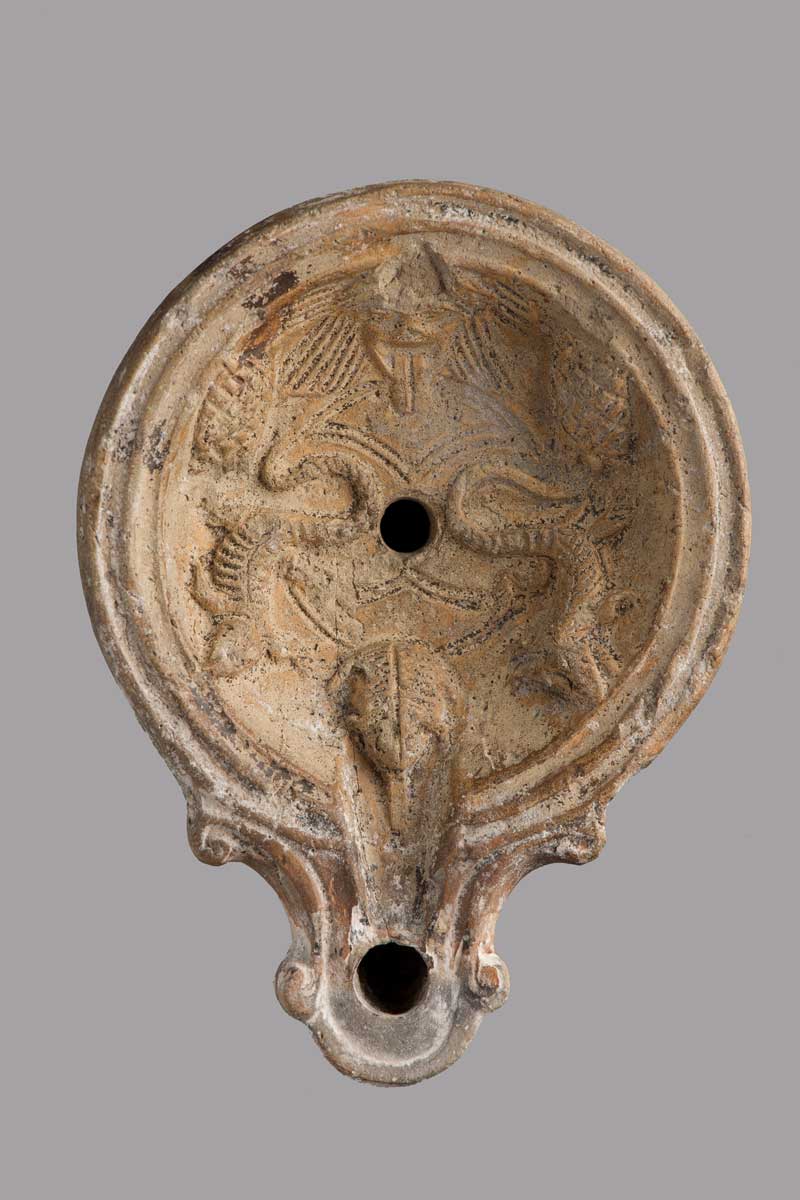The Roman House at Hopkins | The Art of Light
Apotropaic Talisman Against the “Evil Eye”
By Michele Asuni


Measurements: Length: 9.8 cm, Width: 7.2 cm, Height: 3.4 cm
Material: Ceramic
Culture/Date: Roman, 1st c. BCE
Provenance: Tyre, Syria
This lamp’s discus decoration depicts several symbols which were thought to be powerful deterrents against the “evil eye.” The “evil eye,” a redolent concept in several Mediterranean cultures, was believed to originate from a malevolent person looking at someone with intense envy or dislike.
The figures represented on this object are closely associated with the chthonian sphere of the Greco-Roman pantheon: a Gorgon head, two lizards, two turtles, and a frog. When the hero Perseus decapitated the Gorgon Medusa in his quest to save Andromeda, he used the monster’s head as a weapon before handing it over to the goddess Athena, who placed it on her shield. A Gorgon head, or gorgoneion, was typically used in pediments, shields and coins as a decorative element and apotropaic symbol. The word Gorgon, in fact, derives from the Greek gorgòs, “dreadful”: the horrifying gaze of this female creature was supposed to instill terror upon those who encountered it and was, therefore, thought to deflect the evil eye. Lizards, frogs and other reptiles were also associated with the Underworld: lizards symbolized death and resurrection because of their hibernation habits, while turtles were dear to the god Mercury (the Greek Hermes), whose affiliation with Hades is attested throughout Greek and Roman mythology. The plethora of chthonian animals represented on this lamp echoes and magnifies the power of the Gorgon, making this object both a device for lighting and a potent talisman against the evil eye.